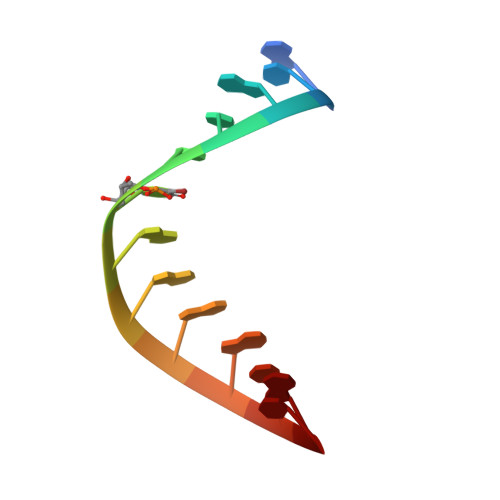The 1.3 A resolution structure of the RNA tridecamer r(GCGUUUGAAACGC): Metal ion binding correlates with base unstacking and groove contraction.
Timsit, Y., Bombard, S.(2007) RNA 13: 2098-2107
- PubMed: 17940138
- DOI: https://doi.org/10.1261/rna.730207
- Primary Citation of Related Structures:
2R1S, 2R20 - PubMed Abstract:
Metal ions play a key role in RNA folding and activity. Elucidating the rules that govern the binding of metal ions is therefore an essential step for better understanding the RNA functions. High-resolution data are a prerequisite for a detailed structural analysis of ion binding on RNA and, in particular, the observation of monovalent cations. Here, the high-resolution crystal structures of the tridecamer duplex r(GCGUUUGAAACGC) crystallized under different conditions provides new structural insights on ion binding on GAAA/UUU sequences that exhibit both unusual structural and functional properties in RNA. The present study extends the repertory of RNA ion binding sites in showing that the two first bases of UUU triplets constitute a specific site for sodium ions. A striking asymmetric pattern of metal ion binding in the two equivalent halves of the palindromic sequence demonstrates that sequence and its environment act together to bind metal ions. A highly ionophilic half that binds six metal ions allows, for the first time, the observation of a disodium cluster in RNA. The comparison of the equivalent halves of the duplex provides experimental evidences that ion binding correlates with structural alterations and groove contraction.
Organizational Affiliation:
Laboratoire de Cristallographie et de Biochimie Théorique, Institut de Biologie Physico-Chimique, UPR 9080, CNRS, 75005 Paris, France. Timsit@ibpc.fr
















